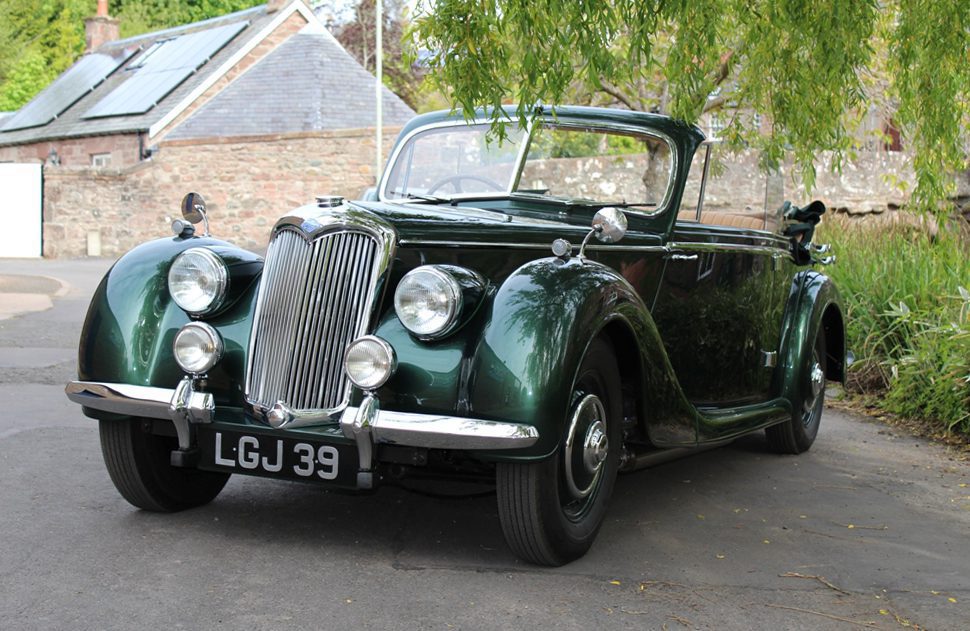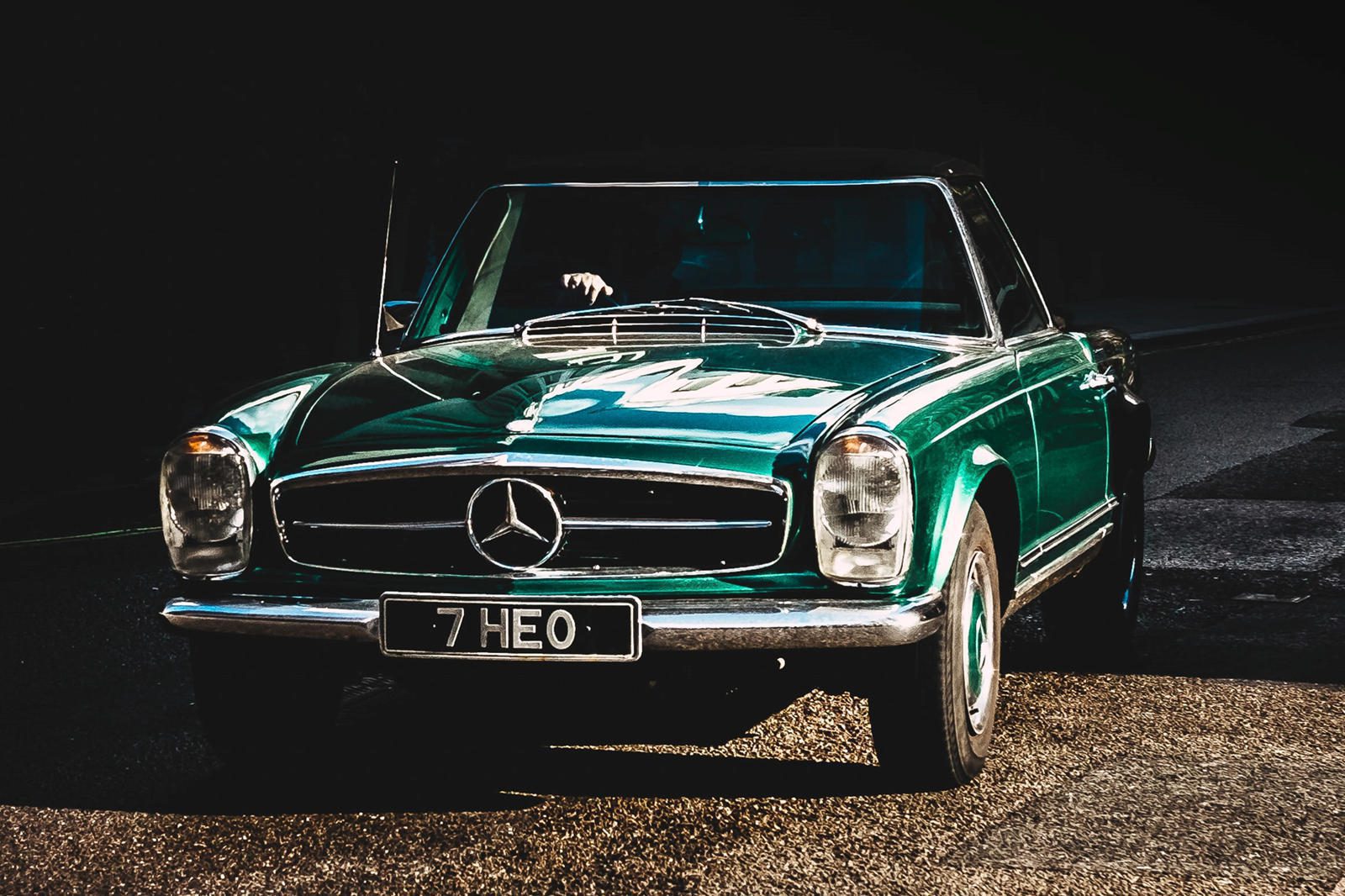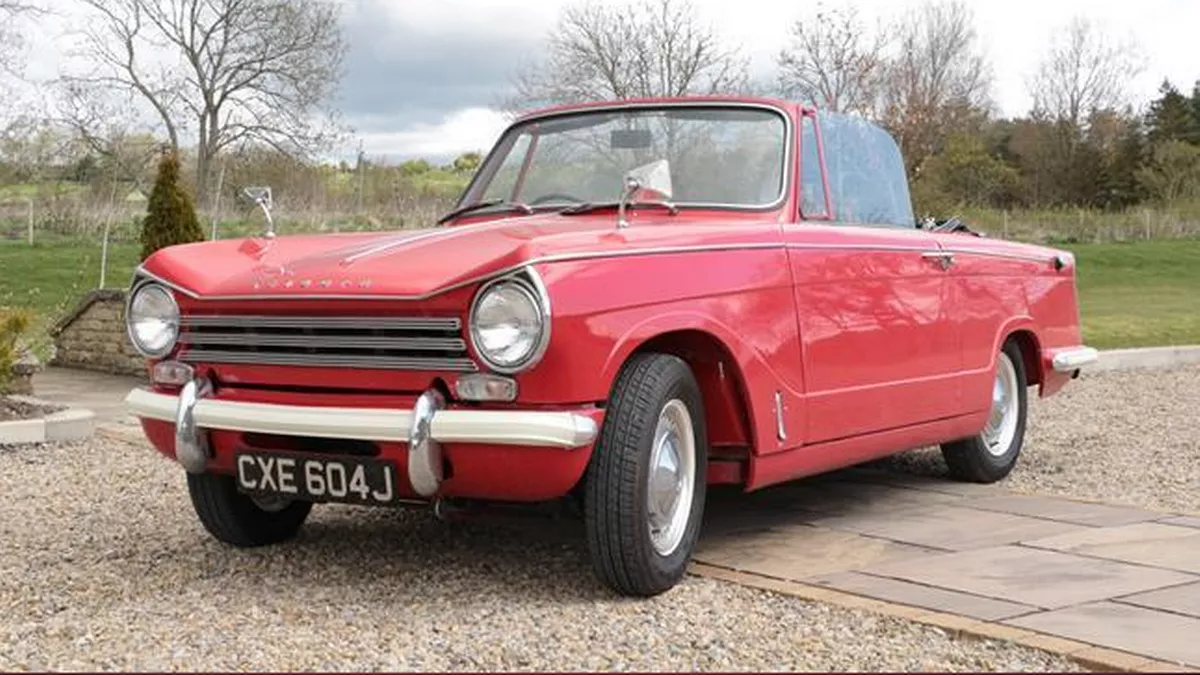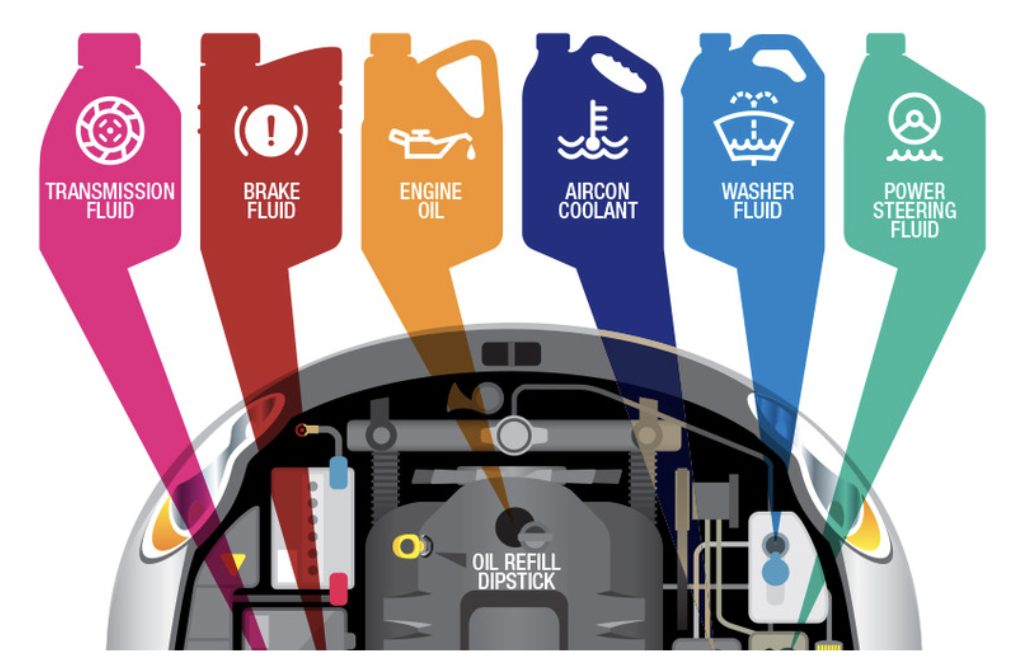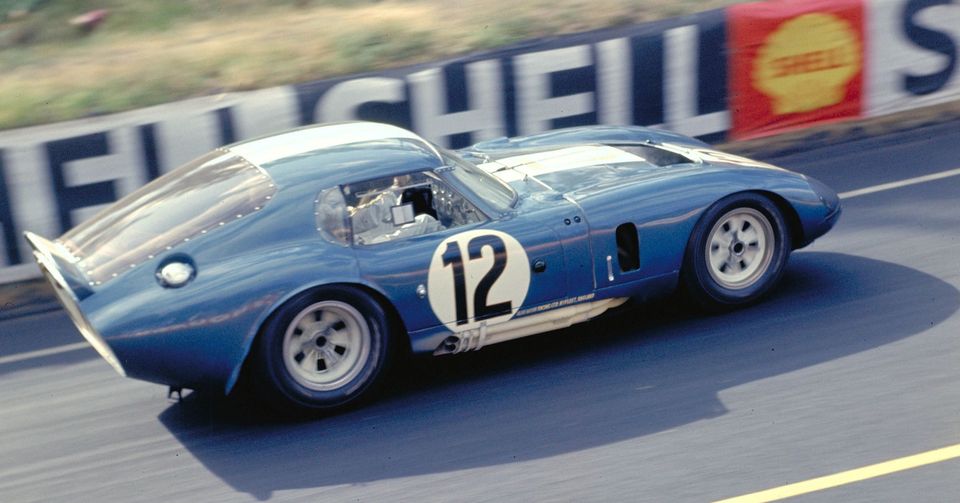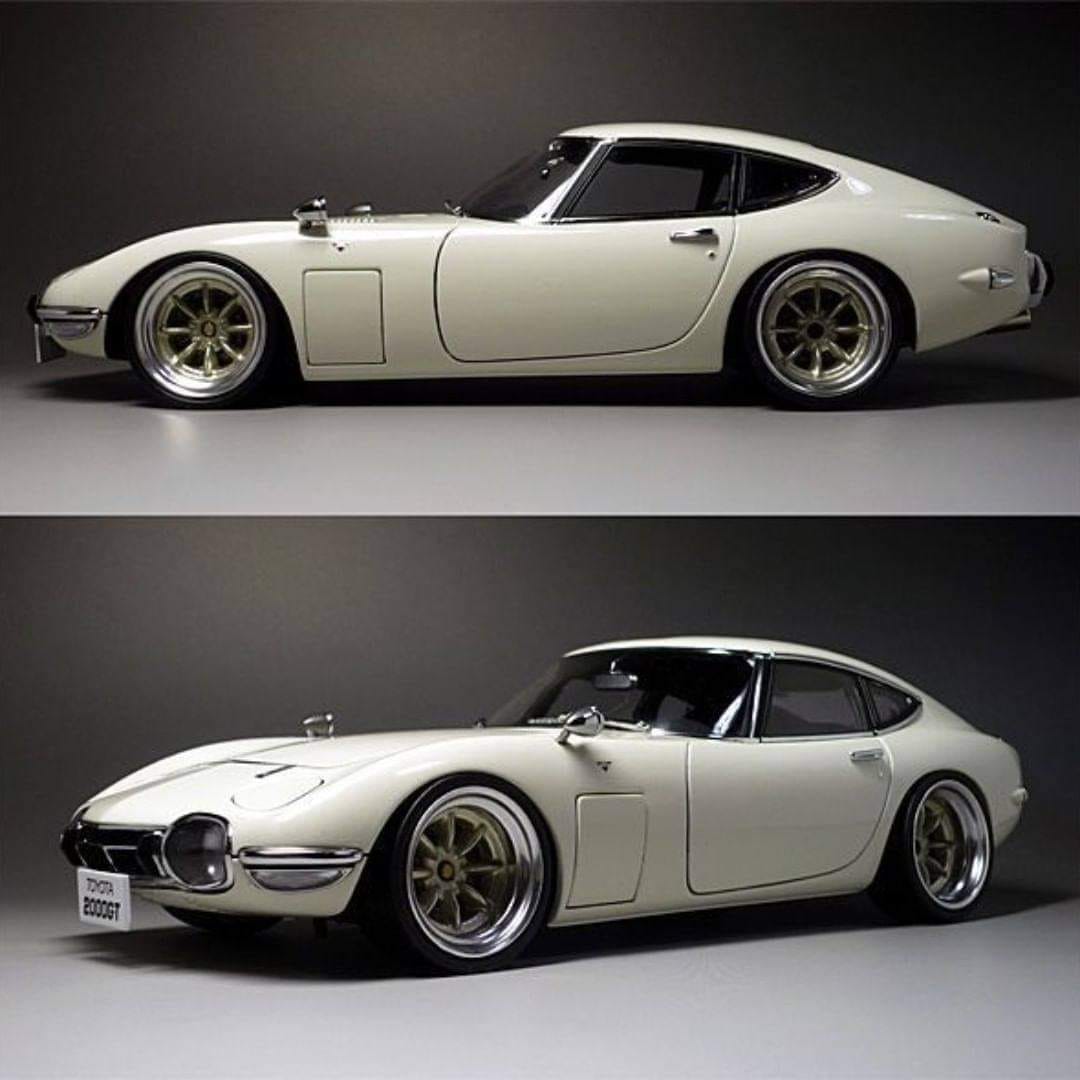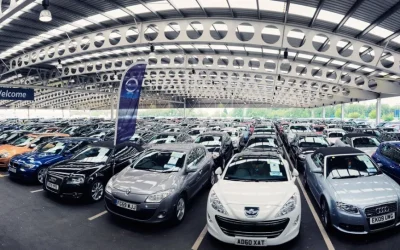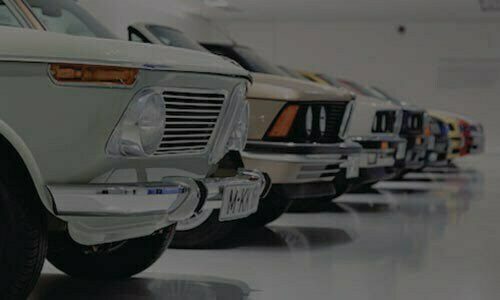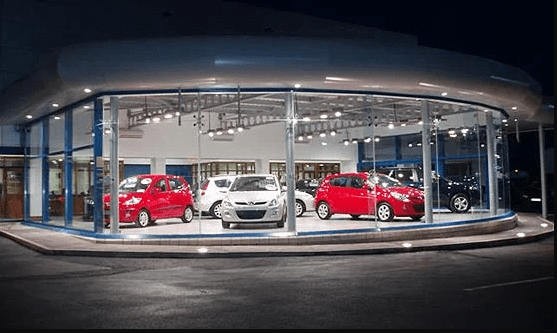Unforgettable Rides: Exploring the Timeless Charm of Classic Cars
Classic cars hold a special place in the hearts of automotive enthusiasts and collectors around the world.
Ah, classic cars! Those four-wheeled time capsules that transport us back to a bygone era of motoring excellence. Strap yourself in, my friends, as we embark on a journey through automotive history. From the earliest pioneers to the glamorous chariots of the 1950s and 1960s, we’ll delve into the very DNA of classic cars. Get ready to be dazzled by the design trends, technological breakthroughs, and cultural influences that turned mere automobiles into legends. Buckle up, rev your engines, and let’s begin this exhilarating ride!
The Golden Age of Classics: Where It All Began
The early days of classic cars marked a significant turning point in the history of transportation. This chapter takes us back to a time when horse-drawn carriages gave way to the emergence of automobiles, setting the stage for a revolution in human mobility. Within this pivotal era, we delve into the minds of visionary individuals such as Henry Ford, whose relentless pursuit of innovation and introduction of the iconic Model T forever altered the automotive landscape.
The rise of classic cars can be traced to the groundbreaking efforts of Henry Ford and his revolutionary assembly line. Ford’s unwavering determination and indomitable spirit transformed the automotive industry, giving birth to the iconic Model T. With its efficient production methods, the Model T swiftly rolled off the assembly lines, captivating the imagination of the masses.
The impact of the Model T was profound, transcending mere transportation. It revolutionized society, liberating individuals from the constraints of their immediate surroundings and enabling them to explore new horizons. With its accessible price point, durable construction, and straightforward design, the Model T became a symbol of progress and freedom, redefining personal mobility for generations to come.
However, the birth of the classic car era was not exclusive to Henry Ford and the United States. In the United Kingdom, a cadre of automotive pioneers emerged, each contributing their unique visions to the landscape of British motoring. Figures such as William Morris, Herbert Austin, and Sir Henry Royce played pivotal roles in shaping the industry, leaving an indelible mark on classic car history.
By delving into archives and drawing from nostalgic anecdotes, we resurrect the spirit of those early automobiles and uncover the captivating stories that unfolded on the roads less traveled. The tales of intrepid adventurers who braved uncharted territories behind the wheels of their classic cars come alive once more, reminding us of the courage and determination required to traverse the evolving network of roads.
From the idyllic country lanes of rural England to the bustling streets of London, these early classics embodied the elegance, craftsmanship, and pioneering spirit of their time. We examine the technological innovations and design marvels that set the stage for the classic cars that followed, appreciating the ingenuity and vision of the automotive pioneers.
Through this chapter, we embark on a historical voyage, unearthing the triumphs and setbacks that characterized the Golden Age of Classics. It was a time when the seeds of automotive greatness were sown, leaving an enduring legacy on the roads we travel today. Join us as we uncover the transformative power of early classics, exploring the roots of an industry that continues to captivate enthusiasts and collectors alike.
Style, Innovation, and Cultural Zeitgeist: The Building Blocks of Classic Cars
As we embark on our journey through the annals of classic cars, we find ourselves captivated not only by their timeless beauty but also by the intricate interplay of style, innovation, and cultural zeitgeist that shaped these automotive marvels. It is in this chapter that we peel back the layers of history to reveal the fundamental elements that became the building blocks of classic cars.
One cannot discuss classic cars without delving into the realm of design. The aesthetics of these vehicles were far from arbitrary; they were a reflection of the prevailing artistic movements and design trends of their respective periods. From the elegant Art Deco-inspired curves of the 1930s to the bold and flamboyant lines of the 1950s and the sleek aerodynamics of the 1960s, classic cars were the tangible manifestations of the artistic sensibilities that defined their times. Every contour, every curve, and every detail was carefully considered, resulting in exquisite works of rolling art that continue to mesmerize enthusiasts and collectors to this day.
Indeed, classic cars are not only admired for their mechanical prowess and historical significance but also for their timeless design. Let’s explore some design classics that exemplify the artistic movements and design trends of their respective periods:
- 1930s Art Deco: The 1930s marked the era of Art Deco, an influential design movement characterized by sleek lines, geometric shapes, and lavish ornamentation. Classic cars of this period, such as the Bugatti Type 57, Delahaye 135, and Cadillac V16, boasted elegant curves, long hoods, and intricate details that exuded opulence and sophistication.
- 1950s Tailfins and Chrome: The 1950s witnessed a surge of exuberant and flamboyant design elements in classic cars. Large tailfins, abundant chrome accents, and sweeping curves dominated the automotive scene. Notable examples include the Chevrolet Bel Air, Cadillac Eldorado, and the iconic Ford Thunderbird, which captured the spirit of post-war optimism and American automotive extravagance.
- 1960s Sleek Aerodynamics: The 1960s embraced a more streamlined and futuristic aesthetic. Classic cars of this era, influenced by advancements in aerodynamics, featured clean lines, sculpted bodies, and minimalist details. The Jaguar E-Type, Chevrolet Corvette Stingray, and Aston Martin DB5 are iconic examples that epitomize the sleek and sophisticated design language of the time.
- Bauhaus and Modernism: The principles of Bauhaus and Modernism made their way into automotive design, emphasizing simplicity, functionality, and clean geometric forms. This approach can be seen in classic models like the Volkswagen Beetle, Porsche 911, and BMW 2002, which showcased minimalist designs that focused on practicality and performance.
- Italian Elegance: Italian car design has always been synonymous with elegance and passion. Classic Italian models like the Alfa Romeo Spider, Ferrari 250 GTO, and Lamborghini Miura embodied the country’s design philosophy, combining sensuous curves, graceful proportions, and a sense of undeniable allure.
These are just a few examples of the design classics that have become icons in the world of classic cars. Each era brought its own unique aesthetic sensibilities, influenced by artistic movements, cultural shifts, and technological advancements. Classic cars continue to capture the imagination with their timeless designs, showcasing the remarkable creativity and craftsmanship of their respective periods.
However, style alone would not have secured the enduring legacy of classic cars. These machines were also testaments to the relentless pursuit of innovation and technological advancement. Pioneering engineers and designers pushed the boundaries of what was possible, striving for improved performance, comfort, and safety. They experimented with new materials, refined mechanical systems, and harnessed the power of cutting-edge technologies. The classic cars of yesteryears introduced features that were revolutionary at the time, such as hydraulic brakes, overhead camshafts, fuel injection systems, and independent suspension, setting new benchmarks for the automotive industry.
But classic cars were not created in isolation; they were shaped by the cultural zeitgeist of their eras. These vehicles were born out of the aspirations, dreams, and values of the societies that produced them. In the early days of motoring, classic cars represented a sense of freedom, adventure, and social mobility. They embodied the spirit of progress and embraced the idea of personal transportation as a symbol of status and achievement. As the decades rolled on, classic cars became woven into the fabric of popular culture, their presence in films, music, and literature cementing their status as cultural icons. They became symbols of rebellion, elegance, and the pursuit of the extraordinary.
In the world of classic cars, there were several notable individuals who played pivotal roles in shaping the design language and engineering prowess of these iconic vehicles. Let’s explore some examples of these visionary designers, skilled craftsmen, and innovative engineers:
- Harley Earl: Known as the father of automotive design, Harley Earl was a renowned American automobile designer who revolutionized the field with his bold and forward-thinking approach. As the head of General Motors’ Art and Color Section, Earl introduced the concept of “planned obsolescence” and designed influential models like the Chevrolet Bel Air and the Cadillac Eldorado.
- Ferdinand Porsche: A legendary figure in the automotive world, Ferdinand Porsche was an Austrian-German automotive engineer and founder of the Porsche brand. His visionary designs include the iconic Volkswagen Beetle, as well as the groundbreaking Porsche 356 and Porsche 911, which became symbols of performance and precision.
- Giorgetto Giugiaro: An Italian designer with an exceptional career spanning several decades, Giorgetto Giugiaro has left an indelible mark on classic car design. He worked for various renowned automobile manufacturers and created timeless models such as the Volkswagen Golf, Fiat Panda, and the DeLorean DMC-12.
- Carroll Shelby: Carroll Shelby was an American racing driver turned entrepreneur who made significant contributions to the world of classic cars. He founded Shelby American and was responsible for developing the legendary Shelby Cobra, a fusion of British chassis and American V8 power, as well as the Shelby Mustangs, including the iconic Shelby GT350 and GT500.
- Enzo Ferrari: The founder of the famous Ferrari brand, Enzo Ferrari was an Italian racing driver and entrepreneur. He brought his passion for racing into his automobile designs, creating powerful and elegant sports cars like the Ferrari 250 GTO, Ferrari Daytona, and the legendary Ferrari Testarossa.
- Alec Issigonis: A British-Greek designer, Sir Alec Issigonis, left an indelible mark on the automotive industry with his revolutionary creation, the Mini Cooper. This compact car, introduced in the 1960s, became an icon of style and practicality, showcasing Issigonis’ innovative thinking.
These are just a few examples of the brilliant individuals who shaped the design and engineering of classic cars. Their contributions not only transformed the automotive industry but also influenced the aesthetic and technological landscape, leaving a lasting legacy that continues to inspire car enthusiasts and collectors worldwide.
Chapter 3: Legends on Wheels: Iconic Models That Define Eras
In this chapter, we embark on a journey through time, uncovering the legendary models that have become synonymous with specific eras in automotive history. These iconic vehicles, revered for their design, performance, and cultural significance, have left an indelible mark on the landscape of classic cars. Join us as we explore these timeless machines, each representing a unique chapter in the evolution of automotive excellence.
Our first stop takes us back to the early 20th century, where the Ford Model T stands tall as a beacon of innovation and accessibility. Introduced by Henry Ford in 1908, the Model T revolutionized the automobile industry by implementing the groundbreaking concept of mass production. Its affordable price, coupled with Ford’s assembly line approach, brought the dream of car ownership within reach of the masses. With its simple yet robust design and adaptability to various terrains, the Model T became an enduring symbol of the industrial revolution and a catalyst for societal change.
Continuing our journey, we encounter the sleek and alluring Chevrolet Bel Air, which emerged as an icon of the 1950s. This timeless beauty epitomized the post-war era’s optimism and prosperity, with its bold chrome accents, distinctive tail fins, and stylish two-tone color schemes. The Bel Air’s graceful curves and luxurious features embodied the aspirations of the American dream, capturing the imagination of a generation and cementing its status as a cultural icon.
Moving forward to the 1960s, we encounter the breathtaking Jaguar E-Type, a masterpiece of British engineering and design. Introduced in 1961, the E-Type captivated enthusiasts with its sensuous lines, powerful performance, and cutting-edge technology. Often referred to as the “most beautiful car ever made,” the E-Type captured the essence of the swinging sixties, blending elegance with exhilaration. Its timeless silhouette and race-bred pedigree ensured its place among the automotive elite, leaving an enduring legacy that continues to inspire passion and admiration.
No exploration of iconic classics would be complete without a nod to the celebrated Aston Martin DB5, forever associated with the suave and sophisticated James Bond. Introduced in 1963, the DB5 combined exquisite craftsmanship, exhilarating performance, and cutting-edge gadgetry, making it the perfect companion for the iconic fictional spy. Its timeless design and association with the silver screen elevated the DB5 to an unparalleled level of fame, securing its place as one of the most coveted classic cars in the world.
As we conclude this chapter, we have merely scratched the surface of the legendary models that define eras in the realm of classic cars. From the groundbreaking Model T to the glamorous Bel Air, the evocative E-Type to the legendary DB5, each of these vehicles encapsulates the spirit of its respective time, leaving an indelible imprint on automotive history. Their influence extends far beyond the realm of transportation, becoming cultural touchstones that symbolize the aspirations, innovations, and style of their eras.
As we step out of our automotive time machine and return to the present day, we are left in awe of the vast tapestry of human ingenuity and passion that shaped the classic car phenomenon. These machines, more than mere modes of transportation, have become time capsules, encapsulating the dreams, aspirations, and cultural zeitgeist of their respective eras. They have carried us on remarkable adventures, turned heads with their timeless beauty, and forever imprinted themselves upon our hearts. So, my dear friends, keep your eyes peeled for these rolling works of art as they traverse the highways and grace the concourses of car shows. For in their presence, we are reminded of the remarkable journey that has brought us to this point—a journey that celebrates the triumphs of engineering, the boundless power of design, and the indomitable spirit of human creativity. Happy motoring, and may the allure of classic cars forever ignite our passion for the road ahead!
British Legends: Unveiling the Top 10 Classic Cars from the UK
From the rolling hills of the countryside to the bustling streets of London, the United Kingdom has produced a remarkable lineage of classic cars that have left an indelible mark on automotive history. In this article, we pay homage to the British automotive industry and unveil the top 10 iconic British classics that have captured the hearts of enthusiasts around the world. Join us as we take a thrilling ride through time, exploring the engineering prowess, elegant designs, and undeniable charm that define these exceptional British automobiles.
- Aston Martin DB5: The Epitome of British Elegance and Power No list of British classics would be complete without the Aston Martin DB5. Forever immortalized as James Bond’s iconic car, this beauty seamlessly combines timeless elegance with exhilarating performance. From its handcrafted bodywork to the luxurious interior, the DB5 embodies British craftsmanship at its finest.
- Jaguar E-Type: A Sensuous Sports Car Icon Sleek, sensuous, and eternally captivating, the Jaguar E-Type continues to hold its place as one of the most beautiful cars ever created. With its long, flowing lines and powerful engine, it became an instant sensation upon its debut, capturing the hearts of both drivers and admirers alike.
- Rolls-Royce Silver Cloud: Luxury on Wheels Synonymous with luxury and refinement, the Rolls-Royce Silver Cloud is a true British masterpiece. With its hand-built craftsmanship, sumptuous interior, and whisper-quiet ride, this elegant saloon car embodies the epitome of opulence and comfort.
- Mini Cooper: The Quirky British Icon Small in stature but big in personality, the Mini Cooper revolutionized the automotive world with its innovative design and engaging driving dynamics. From its nimble handling to its iconic styling, the Mini Cooper became a symbol of British ingenuity and a cultural icon that transcended generations.
- Bentley Continental GT: British Brute with Unparalleled Grandeur Combining breathtaking power with refined luxury, the Bentley Continental GT is a grand tourer like no other. With its handcrafted interior, powerful engine options, and commanding presence, this British titan effortlessly merges performance and opulence.
- Land Rover Series I: The Pioneer of Off-Road Adventure No exploration of British classics would be complete without the Land Rover Series I. Born out of the post-war era, this rugged off-roader set the benchmark for all-terrain capability. With its go-anywhere attitude and utilitarian charm, the Series I became an adventurer’s faithful companion.
- MG MGB: British Sports Car Heritage The MG MGB is a symbol of classic British sports car heritage. Its timeless design, lively performance, and affordable price made it a beloved choice for driving enthusiasts. With its open-top motoring experience and nimble handling, the MGB captured the essence of pure driving pleasure.
- Austin-Healey 3000: Pure British Brawn The Austin-Healey 3000 represents the epitome of British muscle. With its powerful inline-six engine, distinctive grille, and muscular curves, this iconic sports car delivered thrilling performance and timeless style that continues to captivate classic car enthusiasts.
- Lotus Elise: Lightweight British Precision When it comes to precision engineering and track-focused performance, the Lotus Elise stands in a league of its own. With its lightweight construction, responsive handling, and razor-sharp dynamics, this British sports car embodies the spirit of driving purity.
- Morgan 3-Wheeler: Vintage British Quirkiness Embracing its eccentricity with open arms, the Morgan 3-Wheeler harks back to a bygone era of automotive quirk
FAQ
Q: Are vehicles over 25 years old tax exempt in the UK? A: Yes, vehicles that are over 25 years old are generally eligible for tax exemption in the UK. This means that they are exempt from paying Vehicle Excise Duty (commonly known as road tax) as long as they meet certain criteria, such as being registered as “historic vehicles” and not being used for commercial purposes.
Q: How old does a car have to be to be a classic in the UK? A: There is no specific age requirement for a car to be considered a classic in the UK. The definition of a classic car is subjective and can vary among different organizations and enthusiasts. However, many consider vehicles that are at least 20 years old and possess historical, cultural, or collector value to be classified as classics.
Q: What constitutes a classic car in the UK? A: In the UK, a classic car is generally regarded as a vehicle that has retained its original design, features, and character. It is often associated with a particular era and represents a significant milestone in automotive history. Classic cars are typically appreciated for their craftsmanship, uniqueness, and cultural significance.
Q: Is a 20-year-old car a classic in the UK? A: While a 20-year-old car may not universally qualify as a classic, it can be considered as such in certain cases. The classification of a car as a classic depends on factors such as its historical importance, cultural significance, and popularity among collectors and enthusiasts. Some 20-year-old vehicles may indeed possess these qualities and be recognized as classics.
Q: Can you drive classic cars in the UK? A: Yes, classic cars can be driven on UK roads, provided they meet the necessary legal requirements. They must be registered, insured, and have a valid MOT (Ministry of Transport) certificate if they are over three years old. However, certain restrictions may apply, such as limited use during peak congestion times in certain areas or specific rules for modified classic cars.
Q: When was the golden age of cars? A: The golden age of cars is generally considered to be the period between the 1950s and the 1970s. During this time, automotive design, performance, and innovation reached new heights, resulting in the production of iconic and highly sought-after classic cars.
Q: What was the best year for classic cars? A: Determining the best year for classic cars is subjective and varies depending on personal preferences and specific car models. Many enthusiasts consider the 1950s and 1960s to be particularly notable for classic car production, as numerous iconic models were introduced during this time, showcasing groundbreaking designs and technological advancements.
Q: When was the first classic car? A: The concept of a classic car emerged as automobiles gained historical and collector value over time. It is difficult to pinpoint the exact year when the first classic car was recognized, as it is a retrospective classification. However, early examples of classic cars can be traced back to the early 20th century, as certain vehicles from that era have become highly regarded and sought after by collectors.
Q: Why aren’t classic cars remade? A: The production of classic cars is generally not resumed due to several reasons. One primary factor is that classic cars are often associated with a specific era, and their designs and features reflect the technology and cultural influences of that time. Recreating classic cars would require replicating the original manufacturing processes, which may not be economically feasible or technologically practical. Additionally, the limited supply and historical significance of existing classic cars contribute to their desirability and value among collectors and enthusiasts.
Repossessed Cars for Sale: A Comprehensive Guide
Find unbeatable deals on repossessed cars. Our guide helps you navigate the market, set a budget, inspect vehicles, and more. Start saving now!
aspect of car maintenance is regularly checking and changing the various fluids that keep your
vehicle running efficiently.
The Power of Connected Cars AI: Revolutionizing the Automotive Industry
Discover how AI is revolutionizing the automotive industry through seamless connectivity, data exchange, and communication in connected cars. Explore the benefits, future possibilities, and unique value proposition of AI-enabled vehicles.
aspect of car maintenance is regularly checking and changing the various fluids that keep your
vehicle running efficiently.
Car Safety Technologies: Innovations that Save Lives
Explore the latest advancements in car safety technologies that are revolutionizing road safety and protecting lives on the go.
Understanding Car Fluids: A Guide to Checking and Changing Them
Proper maintenance of your vehicle is essential for its smooth functioning and longevity. One crucial
aspect of car maintenance is regularly checking and changing the various fluids that keep your
vehicle running efficiently.
Tina Turner: Exploring the Connection Between Music and Cars
Discover the unique influence of Tina Turner’s music on the world of cars and automotive culture.
The Jo Schlesser and Allen Grant Cobra Daytona Coupe at Le Mans in 1965
Explore the thrilling race at Le Mans in 1965, featuring Jo Schlesser and Allen Grant in the iconic Cobra Daytona Coupe.
The Era of Group B Rally Car Madness: A Glimpse into the Most Exciting and Dangerous Period in Motorsport History
In the world of motorsports, few eras have left as indelible a mark as the infamous Group B era of rally racing.
The Timeless Beauty and Thrilling Legacy of the 1966 Toyota 2000GT
In the realm of classic sports cars, few hold the allure and prestige of the 1966 Toyota 2000GT.
Unveiling the Benefits of Buying Cars at Car Auctions: A Comprehensive Guide
Exploring the World of UK Car Auctions: Open to the Public and Packed with Opportunities
The Ultimate Guide to Car Auctions in the UK: Insights, Trends, and Best Buys
Discover the ins and outs of car auctions in the UK and unlock the secrets to finding the best deals on affordable vehicles.

MORE VEHICLES
GAUK has developed powerful aggregation software that is monitored by real, live humans and only sources clean data.
AUCTIONS
Search ALL vehicles coming up for auction at the country’s leading sale rooms.
CLASSIFIEDS
Each day we gather up-to-the-minute information from multiple car classifieds websites across the internet
DEALERS
Search, save and compare car dealer vehicles across the entire UK.
“The GAUK Motors app has been a gift. I used to waste hours a day searching different sites and monitoring emails. Now I just set up a search and I’m done”


Joel Marchant
“I used the free service for a while and it wasn’t until I upgraded that I realised just what a fantastic app you’ve built. I’m a customer for life.”
“Hey GAUK. Awesome app. I use it on a daily basis and just bought my first classic car … an EType Jag of all things”
“I never usually write reviews but after watching GAUK grow I just wanted to say well done and keep up the great work”


Jane Cavanah
“There a lot os sites out there promising great things. It was so refreshing to find that you guys actually delivered on all that marketing hype. Cool!”
“The GAUK Motors Newsletter is the only one I look forward to seeing drop into my inbox”
What they’re saying
The Best Experience
GAUK has consistently delivered quality information. Thousands of vehicles from hundreds of websites making your perfect ride … easier to find.



